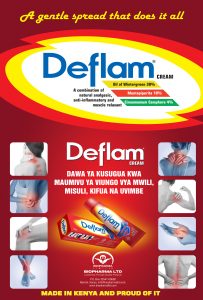As the pest continues to cause damage to farmers’ fields, CIMMYT trained national agricultural partners on integrated pest management.
Fall armyworm continues to cause havoc in Africa. Farmers in Somalia have not been spared since this unwelcome guest showed up in the country over three years ago. As part of the mitigation measures, the Somali Agriculture Technical Group (SATG) in partnership with the International Maize and Wheat Improvement Center (CIMMYT) and the International Committee of the Red Cross (ICRC) recently conducted online trainings on fall armyworm management for sustainable crop protection. The online trainings, targeting national agriculture stakeholders in the country, took place on August 25 and September 30, 2020, with nearly 250 participants attending both webinars.
“This is the first of our efforts to reach out to our partners in Somalia, especially the Somali Agriculture Technical Group and the national agricultural research system, to increase the awareness on the integrated pest management approaches that can help combat this highly destructive pest,” said B.M. Prasanna, Director of CIMMYT’s Global Maize Program and the CGIAR Research Program on Maize (MAIZE).
“This training was designed to help participants to gain a better understanding about fall armyworm, how to identify it, how to monitor and scout for it, how to effectively implement a management strategy that is environmentally and ecologically benign, in order to protect the food security and livelihoods of farmers and their families,” Prasanna said.
An integrated pest management strategy for sustainable control of fall armyworm should consider various interventions, including regular scouting and monitoring of the pest in the fields, host plant resistance, biological and biorational control, agroecological management, and use of environmentally safer pesticides and good agronomic practices tailored for the socio-cultural and economic contexts of the farmers. Ultimately, the purpose of a functional integrated pest management approach is to suppress pest population by applying techniques that minimize human and environmental harm, while protecting the crops from economic damage.
“I am happy to see the expertise from high levels of research at CIMMYT, icipe, IITA, universities, SATG and the humanitarian sector coming together to tackle and solve problems linked to food production and consumption. I believe that such important trainings have great value for Somalia, and should be further strengthened and encouraged,” said Abdalla Togola from the ICRC.
Advertisement

Hussein Haji, the Executive Director of SATG was optimistic that the training would go a long way to empower farmers in Somalia, through their cooperatives, and could lead to better ways of tackling challenges such as fall armyworm, already made worse by other stresses like drought and desert locusts.
“Through our extension workers, we hope this information will trickle down to our cooperatives, who produce mainly maize and sorghum seed in Somalia,” he added.
This comes on the back of a partnership between the ICRC and SATG to implement activities intended to improve food production among rural communities in six regions of Somalia. The partnership would enhance quality seed production with a focus on maize and sorghum, the major staple crops in the country.
Besides Prasanna, the key resource persons included Dan McGrath (Professor Emeritus, Oregon State University, USA), Joseph Huesing (CIMMYT Consultant on integrated pest management) and Georg Goergen (Entomologist, International Institute of Tropical Agriculture), Frederic Baudron (CIMMYT Systems Agronomist), Anani Bruce (CIMMYT Entomologist), Yoseph Beyene (CIMMYT Regional Breeding Coordinator for Africa) and Saliou Niassy (Head of Agricultural Technology Transfer Unit, International Center of Insect Physiology and Ecology).
The fall armyworm, a voracious caterpillar officially reported for the first time in Africa in Nigeria in 2016, remains a serious pest with devastating consequences on millions of farmers’ food and livelihood security. The pest has spread quickly throughout sub-Saharan Africa, primarily attacking maize and sorghum, two main staple crops in the region. The Food and Agriculture Organization of the United Nations (FAO) estimates up to 18 million tons of maize are lost to the pest annually, at an estimated economic loss of $4.6 billion.
To reduce the losses, experts have been recommending a toolbox of integrated pest management (IPM) practices to minimize the damage on smallholder farmers’ fields. Scientists at CIMMYT are also working intensively to develop improved maize varieties with native genetic resistance to this devastating insect pest.
Cover photo: Kowthar Abdirahman Afyare studies agriculture at the Somali National University. (Photo: AMISOM Public Information)
Via cgiar.org

